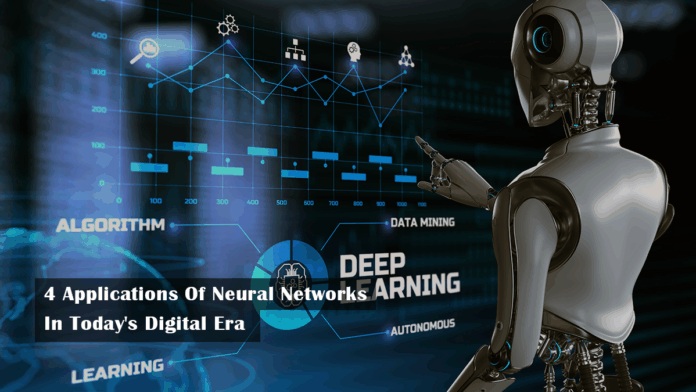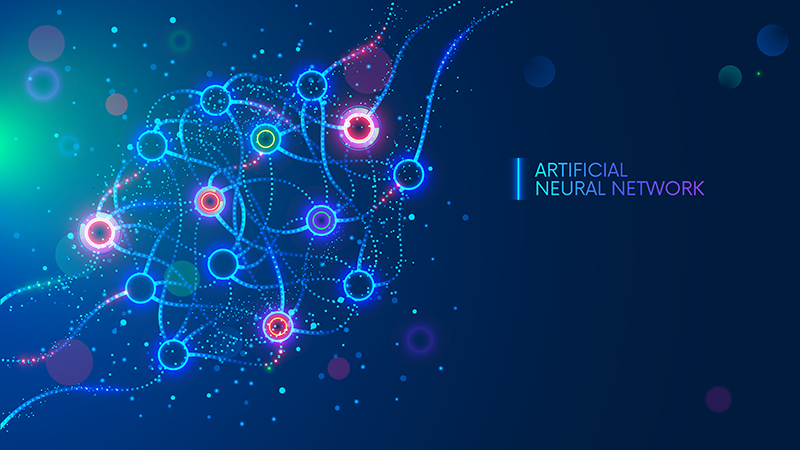
Neural networks refer to a group of algorithms that are used to identify patterns and interpret data through labeling and clustering. Neural network learning processes are accomplished through a training algorithm method. However, there are different training algorithms that you can use depending on your goals. Each has different characteristics and performance abilities.
Types Of Neural Networks
There are three main types of neural networks:
- Artificial Neural Network (ANN): This is a combination of neurons/perceptrons on each layer (input, hidden, and output) of the neural architecture. It’s also called a feed-forward network. ANN is used to solve problems such as tabular data, text data, and image data.

- Recurrent Neural Network (RNN): This type of neural type has recurrent connection on the hidden layer to capture sequential data from the input data. You can use RNN to solve time series data, audio data, and text data. Long short-term memory (LSTM) is a type of recurrent neural network that uses deep learning. It’s suitable for classifying, processing, and deriving predictions from a series of data. You can look at this informative post to learn more about LSTM.
- Convolution Neural Network (CNN): Is widely used in deep learning in different domains and applications. It’s most preferred in video and image processing projects. CNN is structured in filters (kernels) for extracting information from input through a convolution operation.
In this article, you’ll learn how neural networks are applied in various sectors. These include:
Online Shopping
E-commerce engineers have created artificial intelligent systems that can learn your behavior on eCommerce platforms. This artificial intelligence can lead you to buy more than intended. This technology is used in the search of products from an eCommerce website. For instance, when you search for a ‘car phone charger’, the search results will return with all the relevant items. The search algorithms can use neural patterns to retrieve what is relevant and related to your question.
From search results, you can see information like, ‘customers who purchased this product also bought.’ You can also receive personalized recommendations after your search. This ensures that in case you don’t get the product that you need, you can go for an alternative.
Banking And Personal Finance
Neural network intelligence is widely applied in the banking sector in processes such as:
- Mobile Phone Cheque Deposits: Modern technology is eliminating the need for you to physically appear at a bank to deposit your cheque. Instead, you can do so using a smartphone application. These applications can read and convert handwriting on your cheque into text using neural networks.
- Fraud Detection: Banks and other financial institutions have thousands of transactions daily that can’t be monitored manually. To guard against fraudulent transactions, they make use of artificial intelligence to develop systems that can learn how to detect fraud through speak learning or speak neural networks.
Social Media
There is a lot of data that is exchanged across social media platforms. Thus, new features are being added on these platforms using neural networks and learning algorithms to dabble with unlimited social media data.
- Facebook: This social media platform has used neural networks to run its facial recognition software. The moment you upload your profile photo, this software can scan your facial details and keep a memory. If you happen to upload a group photo, it can detect your friends on that photo and automatically prompt you to tag them. Back in 2016, Facebook introduced a sophisticated artificial intelligence technology with neural networks called DeepText. This intelligent engine can learn the actual content of thousands of text posts in a second displaying a near-human accuracy.
- Instagram: Instagram, now owned by Facebook, has employed deep learning by linking recurrent neural networks to decipher the contextual meaning of an emoji. Emojis have replaced social media slang. This new technology can perform sentiment analysis, then auto-suggest to you relevant emojis and emoji-related hashtags. This is a major step into analyzing emoji-to-text translation and how individuals use Instagram. Without AI, this won’t be possible.
- Pinterest: This social media platform uses neural networks through an application known as computer vision. It’s developed through learning algorithms that teach a computer to see as real people do. This AI technology helps identify objects (pins) within an image and gives recommendations for similar pins. Pinterest also utilizes neural networks for spam prevention, ad performance and monetization, search and discovery, and email marketing.
Engineering
Neural networks are also used in several engineering fields such as flight control, power plants, chemical engineering, medical systems, and automotive control, among other fields. Engineers use neural network applications to boost manufacturing, retail, gas and oil, navigation, and information retrieval. Below is an outline of how neural networks are used in various engineering sectors:
- Robotics: With neural networks, you can have intelligent forklift robots, trajectory controls, manipulator controllers, and vision systems.
- Automotive: Learning systems are used to generate advanced guidance systems, virtual sensors, power trains, and warranty activity analyzers.
- Telecommunications: Neural networks are used in ATM network control, data compression, fault management, network design, pattern recognition, signal processing, automated information services, customer payment processing systems, and data security, among other areas.
- Mechanics: Applications of neural networks include systems modeling and condition monitoring.
- Manufacturing: There is a wide application of neural networks in manufacturing such as welding quality analysis, visual quality inspection systems, paper quality prediction, chemical product design analysis, project bidding, computer chips quality analysis, machine and process diagnosis, product design and analysis, among other areas.
- Aerospace: Artificial intelligence is used in the design of aircraft control systems, flight path simulations, fault detectors and simulations of aircraft components, and high-performance auto-piloting.
- Electronics: Deep learning algorithms are used in chip failure analysis, machine vision, circuit chip layouts, non-linear modeling, voice synthesis, process control, and code sequence prediction, among others.
Wrapping Up
The need for human-like systems and applications is on the rise in every aspect of human life. Neural networks that aid in the development of artificial intelligence are now widely applied in business processes to secure transactions and raise the alarm for possible fraud. Additionally, you can use neural networks in engineering, mechanics, electronics, and aerospace. Neural networks are important in helping these areas in handling and analyzing large volumes of data.





























